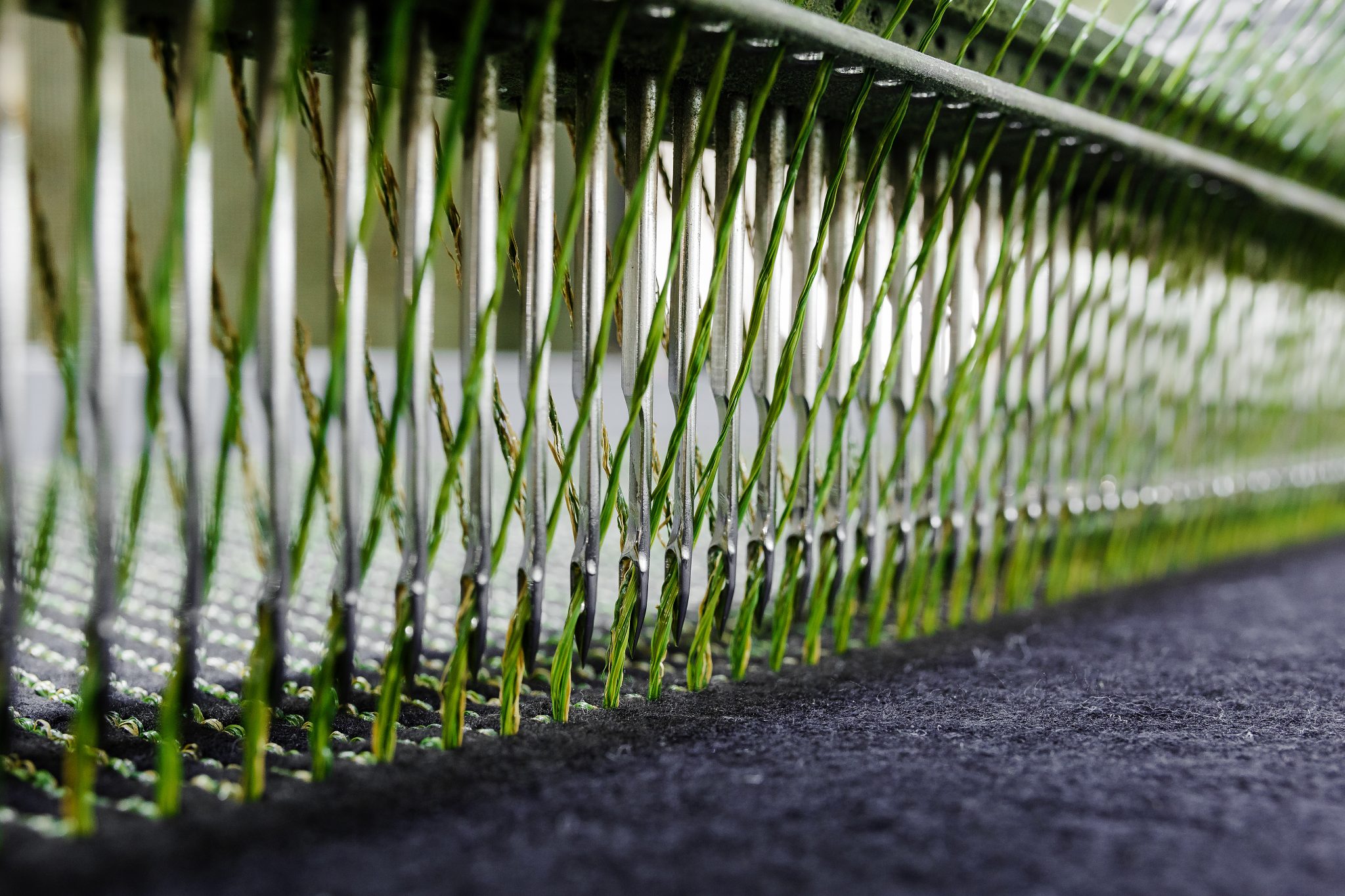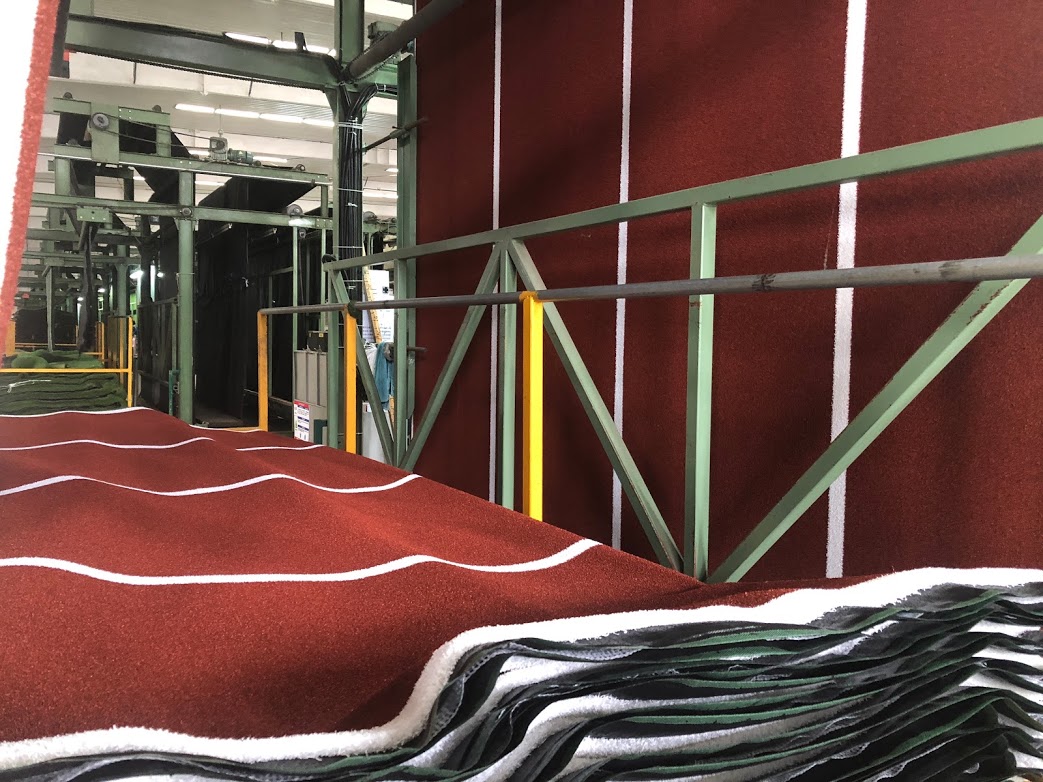A simple guide to producing synthetic grass – Tufting
- 09/23/2020
By Bryn Lee
The process of creating the synthetic turf whereby fibre is tufted into a backing cloth, then cut to create individual tufts of artificial grass.
Equipment
Up until recently the majority of tufting machines used to produce synthetic turf were formerly used to tuft normal carpet, and adapted to allow a longer length to be left on the surface side, thereby creating artificial grass. The tufting machine has since been upgraded, computerised and given more speed, enabling faster, more efficient and accurate turf to be produced.
Behind each tufter is a creel, which holds the spools of yarn produced during extrusion. The layout and techniques used in loading a creel, assist in production efficiency.
Immediately at the rear of the tufter is the backing cloth roll holder. This feeds a single sheet of backing into the tufting machine. Many companies will have two feeders, enabling different backing cloths to be combined, to assist with eventual tuft lock and carpet stability
Two of the elements in the tufting equipment where accuracy and quality are essential are the the needles that the yarn is threaded to, and the sharpness of the knives, beneath, that cut the fibre to the correct length.
Different tufting machines are used to make long or short pile turf. This is governed by the gauge, or the distance between each needle. For hockey, a 3/16 inch gauge would be used, whereas for longer pile football turf, a 3/4 or 5/8 inch gauge is used. The wider the gauge the faster the tufting machine runs. Machines are also set to produce between a range of fibre heights, with the lowest pile heights starting at 9mm up to the wider gauge tufting machines that can reach 70mm.
The final part of the tufting set-up is the repair and check area before the tufted turf is transported onto stage 3 of the process, the backing line.
Operators
There is a good degree of skill involved in this process, but as much as that, it is attention to the small details, that produces great turf. Correct training and the right attitude from the creelers and tufting team are essential.
A standard tufting team would have a creeler, tufting operator and checker at the back end of the process. It is also expected that each stage would be regularly checked by Quality Control, who would oversee a group of tufting machines.
Process
Yarn is pulled from the creel, through tubes and fed into needles. These are numbered for accuracy and checking. The needles punch the yarn through the backing cloth that is slowly pulled through the tufting area. At the right length, knives cut the loop , to create the tufts and the roll moves on, at the desired speed, to set the right number of tufts per linear metre.
If a yarn breaks, the machine stops and the yarn is fixed. The repair is completed through the reverse of the turf, in the checking area, and the front is trimmed to match the length required.
The tufted turf is fed through, ready for transport to the backing area.






